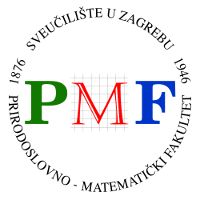Introduction to Human Body
Teacher: dr. Marija Renić, assistant professor, MD
Associate teacher: dr. Goran Šimić, professor, MD
Semester: first
ECTS: 4
Required course
The objective of the course is to enable students to acquire basic knowledge of the structure and functions of the human body at the cellular, tissue, organ, organ system levels, and the body as a whole, with an emphasis on understanding the interrelationship between structure and function, and understanding the concept of homeostasis and control mechanisms involved in maintaining normal body functioning.
Upon successful completion of the course, the student will/should be able to:
- use anatomical terms to identify and describe locations of major organs of each body system,
- relate chemical concepts to more complex physiological processes,
- explain the concept of homeostasis and feedback control mechanisms,
- describe the anatomical structure and explain the functions of each organ system,
- explain the interdependency and interactions of the systems in maintaining normal body functions,
- describe modern technology and tools used to study the structure and functions of the human body.
- Introducing to Human Body. Definition and scope of Anatomy and Physiology, Organization of human body, Organ system overview, Maintaing of life, Homeostasis, Anatomical Terminology
- Cell and Tissues. Basic cell structures and their functions, Transport across cell membranes, Cell communication, Cell Metabolism, Cell Cycle, Cellular differentiation, Classification, structure and function of tissues.
- Skeletal&Muscular System. Introduction to the skeletal system, Classification of bones, Functions of bone, Structure, development, growth and remodelling of the bones. Organization of the skeleton. Joints: classification, structure and types of movements. Introduction to the muscular system, Types of muscle, Structure of a skeletal muscle, Physiology of skeletal muscle fibers, Contraction of skeletal muscle, Actions and interactions of skeletal muscles, Muscle Mechanics, Major skeletal muscles of the body.
- Nervous System. Introduction to the nervous system, Divisions of the nervous system, Types and structure of neuron and glia cells, Resting membrane potential, Generation and conduction of action potential, Synaptic transmission, Synaptic plasticity, Neurotransmitter systems, Organization of motor, sensory, limbic and autonomic nervous system, Higher cognitive functions.
- Blood. Overview of blood composition and functions. Blood plasma, Blood cells, Hemostasis and coagulation, Blood groups
- Cardiovascular System. Structure of the heart, Physiology of cardiac muscle, Cardiac cycle, Rythmical excitation of the heart, Electrocardiogram. Overview of the circulation, Structure and properties of blood vessels, Principal arteries and veins of the systemic and pulmonary circulation, Blood flow, pressure and resistance, Arterial pressure, Microcirculation and lymphatic system, Cardiac output and venous return.
- Immunity. Structure and functions of lymph organs, Innate and adaptive immunity.
- Respiratory System. Functional anatomy of the respiratory system, Pulmonary ventilation, Pulmonary circulation, Exchange of gases, Transport of gases in blood, Regulation of respiration.
- Body Fluids and Urinary system. Anatomy of the kidneys, Nephron structure and function, Urine formation, Structure and functions of ureters, urinary bladder and uretra. Micturition. Renal control of fluid, electrolytes and acid-base balance.
- Digestive System and Metabolism. Overview of the digestive system, Structure and function of digestive system organs, Motility, secretion, digestion and absorption in the gastrointestinal tract, Metabolism of carbohydrates, protein and lipid, Nutrition.
- Endocrinology and Reproduction. Introduction to endocrinology, Chemical structure and synthesis of hormones, transport in blood, mechanisms of action and regulation of hormone secretion, Pituitary glands, Thyroid gland, Adrenal glands, Parathyroid glands, Endocrine pancreas, Structure and function of organs of male and female reproductive system.


